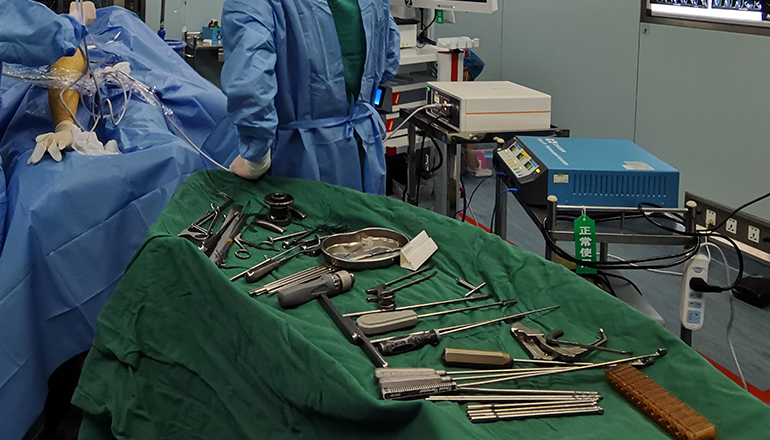- Shanghai, China
- [email protected]
- +86-21-58189111
Left hemihepatectomy is a surgical procedure that involves removing the left lobe of the liver. This procedure can be performed using either open surgery or a minimally invasive laparoscopic approach. Here are the general steps involved in performing a laparoscopic left hemihepatectomy:
Anesthesia: The patient will be given general anesthesia to ensure that they are asleep and pain-free throughout the procedure.
Incisions: The surgeon will make several small incisions in the abdomen to allow access for the laparoscopic instruments. Typically, 4-5 incisions are made for this procedure.
Carbon dioxide insufflation: Carbon dioxide gas will be used to inflate the abdomen, which creates space for the surgeon to maneuver the laparoscopic instruments.
Visualization: The laparoscope, a small camera attached to a thin, flexible tube, will be inserted through one of the incisions. The camera will provide a high-definition image of the surgical site on a monitor, allowing the surgeon to see the liver and surrounding organs clearly.
Mobilization: The surgeon will use specialized laparoscopic instruments to carefully mobilize the liver and separate it from the surrounding tissue and blood vessels.

Transection: The surgeon will use laparoscopic instruments, such as an ultrasonic scalpel or a stapler, to divide the left lobe of the liver from the right lobe. Careful attention is paid to preserving blood supply to the remaining liver tissue.
Hemostasis: The surgeon will carefully check for any bleeding and control it with sutures or other hemostatic devices.
Closure: The incisions will be closed with sutures or staples, and a sterile dressing will be applied to the surgical site.
Recovery: The patient will be monitored closely in the recovery room for several hours before being transferred to a hospital room. The length of the hospital stay will depend on the patient's overall health and the extent of the surgery.
Patients can expect to return to normal activities within several weeks to months after the procedure. They may experience some pain, swelling, and bruising around the incision sites, as well as some discomfort in the abdomen. It is important for patients to follow their surgeon's post-operative instructions carefully, including taking pain medication as directed, resting as needed, and gradually resuming normal activities over time.
In conclusion, laparoscopic left hemihepatectomy is a minimally invasive surgical procedure that involves removing the left lobe of the liver. This procedure is typically performed to treat certain medical conditions that affect the liver, such as liver cancer or benign liver tumors. The laparoscopic approach is associated with smaller incisions, reduced pain, and faster recovery times compared to traditional open surgery. Patients considering this procedure should discuss the risks and benefits with their surgeon and carefully consider all options before making a decision. It is important to choose an experienced surgeon with a high success rate in performing this procedure to minimize the risk of complications and ensure the best possible outcome.
As with any surgical procedure, laparoscopic left hemihepatectomy does carry some risks, including bleeding, infection, and damage to surrounding organs or blood vessels. Patients should discuss these risks with their surgeon before the procedure and ask any questions they may have to ensure they understand the potential complications.
It is also important for patients to be aware of the potential long-term effects of living with only part of their liver. While the liver can regenerate itself over time, patients may need to make certain lifestyle changes to ensure their remaining liver is healthy and functioning properly. These changes may include following a healthy diet, avoiding alcohol, and taking any medications as directed by their doctor.
In summary, laparoscopic left hemihepatectomy is a safe and effective treatment option for certain medical conditions that affect the liver. This procedure offers many advantages over traditional open surgery, including smaller incisions, reduced pain, and faster recovery times. Patients considering this procedure should discuss the risks and benefits with their surgeon and carefully consider all options before making a decision. They should also follow their surgeon's post-operative instructions carefully to ensure the best possible outcome.
Leave a Comments